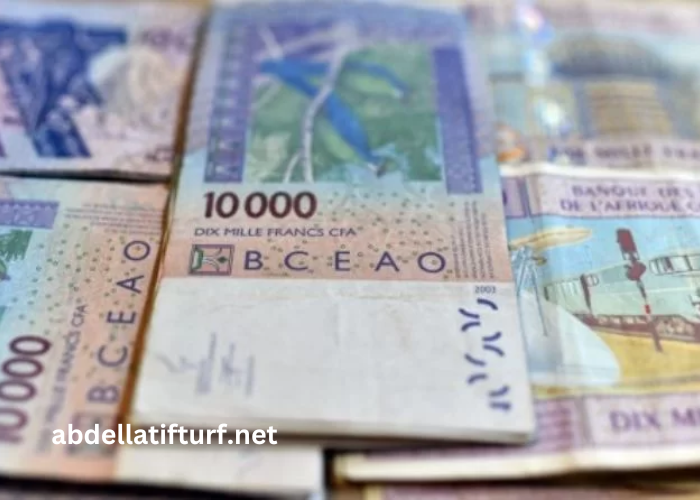The exchange rate between US Dollars and West African CFA Francs (XOF) holds significant economic implications for countries within the West African Monetary Union (WAMU). In this article, we delve into the dynamics of Dollars in CFA, exploring exchange rate mechanisms, factors influencing fluctuations, and the impact on economies within the region. By understanding these factors, individuals and businesses can navigate the complexities of currency exchange and make informed decisions in their financial endeavors.
Overview of Exchange Rate Mechanisms
Exchange rates determine the value of one currency relative to another and play a crucial role in international trade and finance. The exchange rate between US Dollars and West African CFA Francs is determined by market forces, central bank interventions, and economic policies within the WAMU countries. Understanding the mechanisms behind exchange rate determination provides insights into the dynamics of Dollars in CFA.
Factors Influencing Fluctuations in Exchange Rates
Several factors influence fluctuations in the exchange rate between Dollars and CFA Francs, including macroeconomic indicators, monetary policies, geopolitical events, and market sentiment. Economic stability, inflation rates, trade balances, and interest rate differentials between the US and WAMU countries are among the key factors affecting exchange rate movements. Analyzing these factors can help forecast exchange rate trends and anticipate market movements.
Economic Implications of Exchange Rate Fluctuations
Exchange rate fluctuations have significant economic implications for countries within the WAMU region, affecting trade balances, inflation rates, foreign investment, and overall economic stability. A strengthening CFA Franc relative to the US Dollar can improve purchasing power and reduce imported inflation, while a depreciating Franc may boost exports but increase inflationary pressures. Understanding these implications is essential for policymakers and businesses operating within the region.
Impact on Importers and Exporters
Exchange rate fluctuations directly impact importers and exporters within the WAMU countries, influencing the cost of imported goods and the competitiveness of exported products. A stronger CFA Franc may lower import costs but make exports less competitive in international markets, while a weaker Franc can benefit exporters but increase import costs. Importers and exporters must carefully manage currency risk to mitigate potential losses and maximize profits.
Effects on Foreign Direct Investment
Exchange rate stability is crucial for attracting foreign direct investment (FDI) into the WAMU countries, as investors seek predictable returns and minimized currency risk. Fluctuations in the exchange rate between Dollars and CFA Francs can deter foreign investors or increase the cost of capital for projects denominated in foreign currency. Maintaining exchange rate stability is essential for fostering a conducive investment climate and promoting economic growth.
Implications for Tourism and Remittances
Tourism and remittances are significant sources of foreign exchange for WAMU countries, contributing to economic development and household income. Exchange rate fluctuations can affect the cost of travel for tourists and the value of remittances received by families from abroad. A stronger CFA Franc may attract more tourists but reduce the purchasing power of remittances, while a weaker Franc can make travel more affordable but lower remittance values.
Role of Central Banks in Exchange Rate Management
Central banks within the WAMU region play a crucial role in managing exchange rate stability and implementing monetary policies to support economic objectives. Central bank interventions, such as currency interventions, interest rate adjustments, and foreign exchange reserve management, aim to maintain exchange rate stability and mitigate excessive volatility. Understanding the role of central banks is essential for interpreting exchange rate movements and forecasting future trends.
Strategies for Managing Currency Risk
Businesses and individuals engaged in cross-border transactions must implement effective strategies for managing currency risk associated with Dollars in CFA. Hedging techniques, such as forward contracts, options, and currency swaps, can help mitigate the impact of exchange rate fluctuations on cash flows and profitability. Additionally, diversifying revenue streams and maintaining adequate liquidity can provide resilience against currency volatility.
Long-Term Outlook for Dollars in CFA
The long-term outlook for Dollars in CFA hinges on various factors, including global economic trends, regional integration efforts, and domestic policy reforms. Continued efforts to strengthen economic fundamentals, enhance competitiveness, and promote regional cooperation can contribute to exchange rate stability and sustainable economic growth within the WAMU region. Monitoring these developments is crucial for assessing the long-term trajectory of Dollars in CFA.
Conclusion
Dollars in CFA play a pivotal role in shaping economic dynamics within the WAMU region, influencing trade, investment, and overall economic stability. Understanding the mechanisms of exchange rate determination, factors driving fluctuations, and economic implications is essential for individuals, businesses, and policymakers operating within the region. By navigating the complexities of Dollars in CFA with insight and foresight, stakeholders can optimize their financial strategies and contribute to sustainable economic development.




